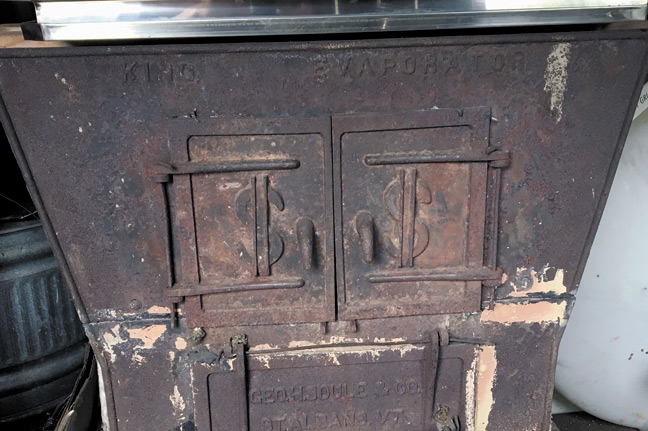UVM Proctor Page
Are you watching your profits evaporate?
Business matters facing owners in 2017
By MARK CANNELLA | MAY 2017
Maple sugaring in 2015 was not as profitable as 2014. The record crop in 2016 was able to stabilize overall financial performance but on a pound for pound basis the 2016 profit margins were still down as market prices slipped.
Bulk syrup prices hover near $2.15 - $2.25 per pound and an increasing number of producers are close to their break-even cost of production level where profits could evaporate completely. Is this doom and gloom for the maple industry? Not necessarily. Any agricultural business is subject to risk that could push a single business year into “the red.” If one year of losses is enough to force an enterprise out of business then its owners are in the wrong business. But it’s not 2012 and bulk syrup is not selling for $2.90 per pound.
Direct Market Competition
The price reductions expected in the direct markets may be delayed but competition has increased. A number of producers already sell directly to stores, restaurants and other wholesale outlets. Bulk price pressure is forcing more bulk producers to try to access this business-to-business channel. When bulk prices dropped approximately 25% over the past 6 years managers exhausted their options for ways to reduce costs. These new maple sellers trying to close sales with buyers increases the competition even if they are not offering lower prices. Remember, some buyers demonstrate high loyalty to established vendors and other buyers are extremely price sensitive. More sellers equals more competition.
Selling direct to consumers or starting value-added products is possible but it presents a series of new challenges. Owner labor will be a large expense required to build a direct clientele. Be sure to add in packaging expenses, promotion, packing, shipping and delivery. The true costs to enter into direct marketing can be high. A direct market or value-added venture often has to scale up dramatically in order to move beyond a creative sideline and achieve its intended goal to help the overall finances for the business.
Management Decisions
Can your business survive the slump? UVM Extension Maple Business Benchmark program has been working with maple producers since 2013 to evaluate the costs and profits of maple sugaring. Here is a list of business matters facing these owners in 2017.
- Are profits down or are they gone? Earning a profit, albeit smaller than the past, is different than losing money. Managers can analyze their costs and break it down to a per gallon or per pound level. Compare cost per unit to your sales per unit. It’s best to calculate average production level over a 3-4 year period to eliminate bias from a very high or very low yield season.
- Can direct market or wholesale activity become a piece of the market plan? Many producers prefer to sell bulk syrup but they know that the current market price is below their cost of production. These producers are calculating how much of their crop they can sell direct to offset their losses on bulk sales. A great example is a producer that crunched her numbers and concluded that if 10% of her annual crop is sold at wholesale prices (~ $38 per gallon and higher) it would bring the business back into profitability. Taking this small step into direct wholesale was decided to be much more feasible that overhauling the entire marketing strategy towards direct sales. Make no mistake, however, local wholesale markets are already being supplied with maple. This business needs to get creative and look outside the region for buyers.
- Cash reserves, capital access and discipline. The best managers take profits from strong years and put them in cash reserves to bridge the poor years. Yes, they may even pay taxes to the government. Paying taxes in 2013 may have been worth it in order to have a capital reserve account available when it hit 80 degrees in March of 2014. Remember that week? Owners may also reinvest and build equity through equipment purchased outright or paying down loans ahead of schedule. This improved equity absorbs cash but it can still position the business to borrow operating capital to get through a bad year. It is possible for a solid agricultural business to borrow outside capital to maintain the business in down years. The business should be able to demonstrate prior solid performance and forecast strong performance into the future. Ask a lender.
A maple business needs to be resilient to financial risks. The combination of advanced planning and the ability to make system changes will serve maple business owners well even if some of the profits have evaporated in recent years.
































